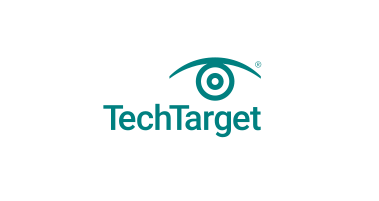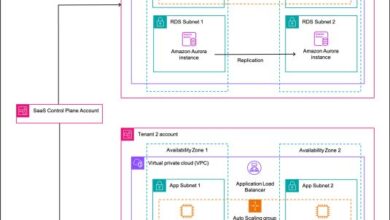Quick Study: Security and the Cloud

The very nature of cloud computing raises security concerns. Gone are the days when an IT director could give a loving pat on the back to a disk drive loaded with vital company data. Today, your data — corporate and personal — is “out there”.
Of course, even that in-house storage hasn’t been truly secure since hackers came onto the scene.
While the cloud presents new security challenges on what seems a daily basis, smart companies are taking the initiative with security strategies that extend outward to their business partners, suppliers, and service providers.
As you will see in this Quick Study — a compendium of InformationWeek cloud security articles from the past year — experts are sharing their advice and experiences on how to make an enterprise cloud strategy as secure as possible.
A Cloud Security Snapshot
The Cloud Security Partnership
Cloud security is a shared responsibility between the businesses leveraging the cloud and their cloud service providers. Here are tips on how to build and maintain robust security models.
Security Top IT Investment Priority in 2023
Chief information security officers must develop a comprehensive security investment strategy that considers human capital, even while qualified IT security professionals are in short supply. Red Hat says cybersecurity is taking precedence over innovation as the top area of investment in 2023.
Leaders Should Pay Attention to These 4 Major Cloud Trends
Many enterprises still find cloud migration and management to be a daunting challenge, and are left wondering where to start or, more importantly, what to fix. Here’s how organizations adopting cloud-native architectures can bypass missteps on their migration journey.
US Federal Agencies Face Multiple Cloud Challenges
Burdened by inertia, apathy, and obsolete technologies and practices, federal agencies have fallen behind in cloud adoption. However, progress has been made in giving agencies the guidance they need to make their cloud journey more secure.
CISOs Mark Data Proliferation as Growing Security Problem
Organizations must take active steps to maintain an accurate and up-to-date inventory of their data, with particular focus on identifying their sensitive data. Failure to do so could cost an organization customers.
Stemming the Security Challenges Posed by SaaS Sprawl
Even when security teams take steps to manage and secure SaaS apps, the solutions they put in place to mitigate these risks are often insufficient. It’s time for a more comprehensive approach.
Cloud Security Best Practices
Cloud-Native Security Best Practices for Evolving Cloud Environments
As organizations have shifted from basic cloud environments to distributed, microservices-based, cloud-native environments, the cloud security strategies that sufficed five or 10 years ago are no longer enough.
9 Questions for IT Leaders to Ask About Cloud Cybersecurity
Rapid migration to the cloud continues, but the benefits of a cloud strategy must be balanced with cybersecurity. How can IT leaders assess their organizations’ cloud security posture? Asking nine key questions can shed some light on the gaps in cloud cybersecurity and how to start filling them.
Top 5 Cloud-Native Risks and Best Practices to Avoid Them
Malicious actors are taking advantage of a plethora of new opportunities in the cloud. Here are the top cloud-native risks and strategies for avoiding them, courtesy of InformationWeek’s partner Network Computing.
Success in the Cloud Requires an Attitude Change
Migrating from legacy environments to the cloud requires changes to the way organizations approach DevOps, FinOps, SecOps and more.
How to Prepare Your Business for the Cloud: 6 Factors to Consider
Cloud is the future — and those looking to migrate must do so strategically, and consider all the important organizational factors before diving in. Key to such a migration is overcoming the misconception that the cloud is inherently less secure.
Why Cloud Native Isn’t for Everyone
Cloud migration has increased exponentially worldwide, and enterprises as a whole have benefited from the shift. But a “one-size-fits-all” approach may not be the answer for everybody.
8 Secrets for Smoother Sailing During a Cloud Migration
Don’t let the words “cloud migration” tie you up in knots. A few simple tips can make a cloud transition much faster and easier, and a solid security strategy is one key.
Cloud Security in Fintech
Hackers and Phishing, Oh My! Easing Fintech Security Concerns
Securing fintech organizations and their customer data requires ongoing efforts on the technical front, but those companies also must be conscientious about maintaining an atmosphere of trust. As such, ensuring best in class security protocols is critical.
Cloud Skills Gap a Challenge for Financial Institutions
Not having the right talent can lead to poor resource management performance and unnecessary cloud spending, as well as security risks and compliance issues. Difficulty sourcing talent looms as a potential security risk.
Cloud Adoption in Financial Services: Risks and Opportunities
The cloud can offer financial services firms a flexible and scalable option for storing data and workloads, but a holistic security strategy is critical to ensuring regulatory compliance.
Tools and Technology
Google Cloud to Offer Security-Vetted Open-Source Software
Google will offer Assured Open Source Software, the open source software it has vetted and uses internally, to enable enterprises to gain the benefits of OSS that has been verified as secure.
It’s Time for an IT Security Fabric
Data isn’t the only thing that’s siloed. Have you checked your security lately? You can implement security in a way that breaks down silos and covers every inch of IT.
10 Must-Have Enterprise Cloud Skills
To thrive in today’s multi-cloud environment, every enterprise IT team needs professionals with these 10 cloud computing skills. Topping the list is security.
Why Defending Modern Cloud-Based Enterprises Must Start With ZTA
The rise of hybrid work environments has widened the attack surface for adversaries. Zero-trust architecture is critical to securing functional operations.



